by Hannah Menzies
In New York City, an active community of professionals working in comics and image-text combinations hopes to share their knowledge and benefit from the experience of others in the field. The New York Comics and Picture-story Symposium is a collective for trading stories, tips, critiques, and encouragement in a fresh setting by combining the social with the educational.
The symposium held its first weekly meeting, for the purposes of organization, on May 7th, 2012, at Parsons, but also included four short presentations to give attendees a feel for what future meetings could include. The talks were diverse, addressing the many angles of approaching comics, picture stories, and animation in the twenty-first century. The presentations included critical approaches to comics, a professional artist discussing her work, and two talks geared toward the practicalities of publication. These topics went a long way toward exemplifying the key areas that the symposium hopes to address. Embracing all types of “text-image” forms, they wish to include distribution of print and digital work, the relationship between readers and creators, and modes of being “self-sustaining” for “self-initiated” work in their meetings. In short, the symposium seeks to create an empowering dialogue to increase the creative successes of its participants, thereby strengthening the local “image-text” community as a whole. The symposium currently meets weekly at a rotating schedule of locations based on space-availability, but the alternation in venues from university libraries to performance spaces is currently a contributing factor in the success of the symposium. It reminds attendees that the barriers between professional and personal life are artificial and that the arts are relevant in any environment.
The symposium has successfully hosted over 15 gatherings since its inception, and continues to maintain ties to the Free University, and Occupy University, both organizations geared toward free educational workshops for the “99%”. Meetings are commonly led by a rotating “facilitator” volunteer and the symposium does not devolve into a specific chain of command. Founding members, however, include experienced practitioners in the field of image and text such as Bill Kartopolis, Ben Katchor, and Bob Sikoryak.
The 12th symposium meeting was held at the Butler Library of Columbia University on June 30th and included two presentations: Marvel ex-editor, writer, educator and pop-culture historian Danny Fingeroth explored the surprising similarities between the lives comics greats Stan Lee and Harvey Pekar, followed by Felipe Galindo Feggo who explained the creative process and multi-media platform behind his ongoing illustrated book Manhatitlan, which juxtaposes Mexican and American cultural identities.
Fingeroth’s slide-illustrated discussion was particularly illuminating regarding the intersections in the comics medium that might popularly be assumed disparate. When comics fans hear the name Stan Lee, they naturally think of super-heroes and the all ages entertainment that Marvel has provided over the years whereas the name Harvey Pekar conjures up the early days of the indie autobiography and the celebration of the common man. Fingeroth pointed out the unique thread tying these two comics giants together: a common reaction of adoration and respect from fans for a particular individual. The hero worship surrounding Stan Lee and Harvey Pekar is based at least partly, Fingeroth argued, on the persona they created via their literary output. Just as Stan Lee marketed himself along with Marvel through breaking into personal commentary within comics and also through the “bull-pen” letter pages, Harvey Pekar turned himself into a character within his own works that people felt they could “get to know”. Both men created a sense of “personal relationship” with readers that may have since influenced the way comics are produced and marketed. According to Fingeroth:
“They each were able to make their readers feel that they were speaking directly to them, and only to them, to a greater degree than most writers due to not just skill, but to the fact that they were also editors and art directors of what they wrote. This created a seamless back-and-forth between the person relating the story and the person who was creating the context in which the stories appeared.”
Felipe Galindo, professionally known as Feggo, also presented using colorful, appealing slides of his work Manhatitlan, as well as videos of related animation. Feggo, like many of the comics professionals who present at the symposium, also shed some light on his entry into comics and the events that have led him up to his current creative focus. After growing up in Mexico City, coming to New York to work on Twilight Zone comics felt like an “out of body experience”. His work Manhatitlan takes the names “Manhattan” and “Tenochtitlan” and combines them to illustrate this bringing together of worlds in a mythological encounter. Feggo is heavily influenced by the illuminated codex images preserved in bark books from pre-Aztec culture but also brings modern humor to the clash of old and new. Gods and goddesses people the streets and subways of Manhattan in his collection, which is currently being exhibited at universities, but the Aztec eagle warrior, a messenger figure, is his most personal, since, like Feggo, he bridges between two cultures. Feggo views his animation work as a “digital codex” that carries on in a renovated mythological tradition.
The 15th meeting of the symposium was held on August 20th at the Lounge at Dixon Place, an arts friendly location that traditionally hosts a wide range of musical and theatrical performances and featured speakers included artists Simon Fraser and Andrea Tsurumi. This less formal location was nevertheless equipped with the necessary projector and IT equipment to bring their audio-visual presentations to life. Attendees briefly discussed the possible incorporation of special formats, including workshops, into future meetings, before getting started.
Simon Fraser, who originally hails from the Scottish Highlands, obliged his audience with an overview of his varied and often unpredictable career, from a decisive interest in pursuing comics at the age of 16, through art college work to flirtations with mainstream comics publishers. Fraser shared practical insights on collaborating, working for big publishers, and developing creator-owned projects. The details of his creative process were particularly fascinating, including phases of his changing art style over time that Fraser illustrated with examples of his commercial work for 2000 AD and other projects. The recent completion of a 15 year run on 2000AD series Nikolai Dante, and the intricate “world-building” it involved, formed a significant part of the discussion, as well as Fraser’s first major creator-owned project, the highly successful Lilly MacKenzie, launched on the digital comics platform ACT-I-VATE before developing into a print version. Fraser will also be taking over the formal leadership of ACT-I-VATE from comics veteran and digital comics champion Dean Haspiel this autumn while Haspiel continues with his current project, the “multi-media literary arts salon” TRIP CITY. Fraser is himself quite a champion of digital and collective projects, asserting that promoting yourself as an artist is a process of learning to “stand up together” and form support systems among practitioners of the medium. His final pragmatic advice to aspiring creators was to continuously learn new techniques and concepts from projects that may “fail” and implement that knowledge in future work. It’s an economy of personal progress that survives the vicissitudes of the market.
Andrea Tsurumi brought her unique artistic vision to the symposium as well as an idiosyncratic history with comics and illustration that is still evolving. Originally an English major, Tsurumi also has a background in theatre production, but only gradually realized that storytelling through artwork was her vocation. Her main artistic influence, she explained, is “watching people”, how people talk and behave, and this leads to her favorite area of artistic exploration: monsters. Tsurumi revels in the strange and playful, the unexplored avenues of shape and form, and finds a jumping off point in the real and the human. She has been obsessed with monsters since childhood because they are “outside normal society” and therefore invite curiosity. Tsurumi surveyed some of her favorite purveyors of the “monstrous” before illustrating her own projects. These included filmmaker and artist Guillermo del Toro and comics artist and writer Mike Mignola’s work on Hellboy; both examples represent a humanization of monsters that she finds appealing. Tsurumi’s varied projects have taken her further into experimentation, “playing” with ideas until she finds new venues of expression, such as “food horror” in her comic Yakitori and “tapping into the subconscious” through her newer theatrical animal narrative Zoötrope. An ongoing Uncanny Eating blog with Karan Katz also renders true-life stories of the grotesque, and often humorous, aspects of food.
Question and answer sessions for Fraser and Tsurumi were particularly animated, and often veered toward discussion of influence, interests, or aspects of self-employment. The interaction of audience members at symposium meetings makes it clear that such an organization is not only welcome in the community, but in demand. The New York Comics and Picture-story symposium occupies a niche commonly supported by professional organizations, but with more elastic confines to include the many wide-ranging occupations and interests currently possible regarding image-text combinations. Its “free education” motto is particularly compelling, suggesting that sharing of knowledge and skills should be the norm rather than the exception. If Simon Fraser’s thesis is correct, this makes for an artistic community who are prepared to “stand up together” to achieve their goals.


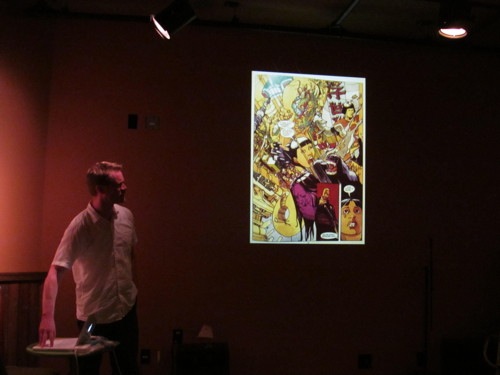
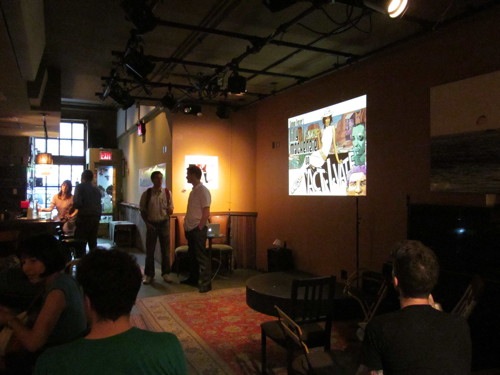
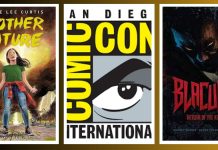
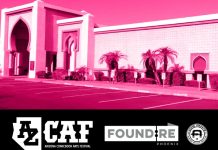
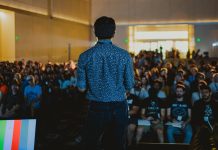
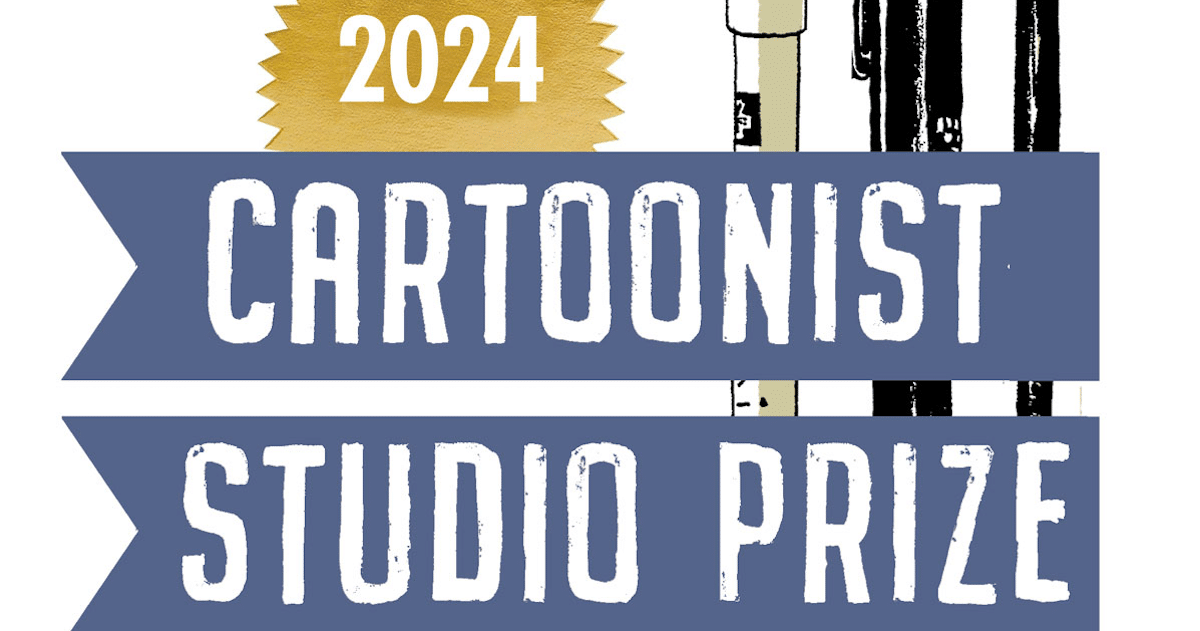


I Miss NYC :_(
I would so go to this!
Nice review to see on my way up to NYC. I’ll be presenting at the symposium tonight alongside Alexander Rothman in the Russel Library at Columbia. Hope people will come out and talk about new ways of making comics.
There’s a meeting tonight?
Specifics please?
(The WordPress blog is blocked at work.)
Here’s the information for tonight, Torsten.
The sixteenth meeting of the NY Comics & Picture-story Symposium will be held on Monday, August 27, 2012 at 7pm in room 305 (3rd floor) Russell Hall, The Teachers College Library, Columbia University, 525 West 120th Street, NYC (only accessible through the main library stairs). Take #1 train to 116/Columbia Univ, walk north on B’way to 120th (do not enter Columbia Univ. campus) Main entrance is on the north side of 120th St. mid-block between Broadway and Amsterdam. Visitors must sign in.
Scheduled presentations this week by Robert Berry and Alexander Rothman Facilitator: Peter Quach. Free and open to the public.
this sounds really cool. boy, would I enjoy this.